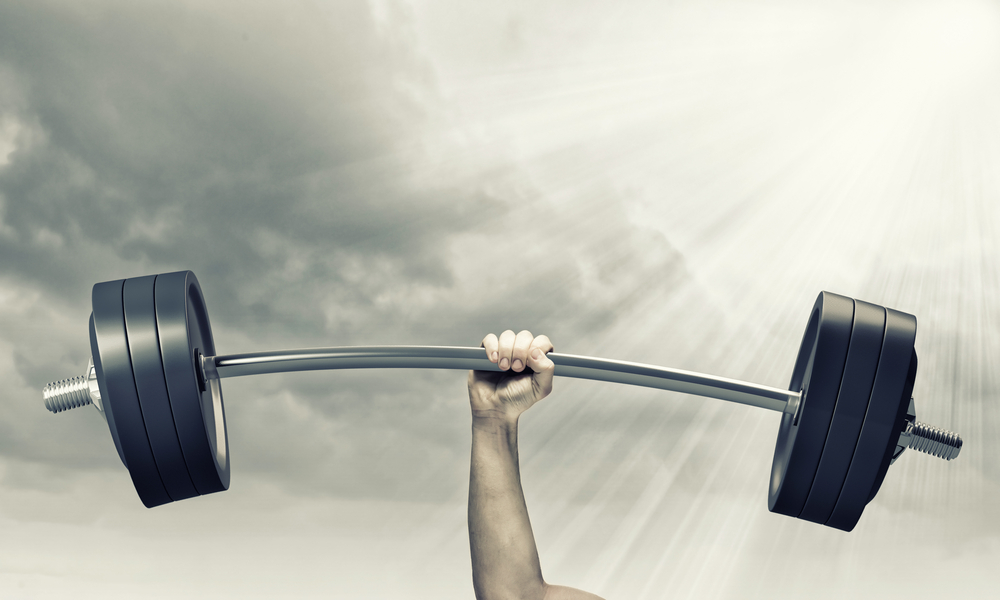
- May 22, 2019
- Silvia Angér
Packing On The Muscle
We’ve all seen the stereotypical gym guy guzzling his protein shake and other media sources which encourage us to EAT MORE PROTEIN for making muscle gains. Just because it’s overly done, it doesn’t mean they are wrong. Protein truly is the fuel which muscles need to grow. And the reason we must increase our protein is because our body is using it up quickly, not only to feed muscles, but for hormone production. Those who want to build muscle need a protein boost to keep up.
Conventional wisdom states you must take in one gram of protein per pound of body-weight. For example, if a man weighs 160-pounds then he should consume 160 grams of protein per day.
What does 160 grams look like?
- 8-ounce chicken breast
- 1 cup cottage cheese
- 1 roast beef sandwich
- 2 eggs
- 1 glass of milk
- 2 ounces of peanuts
If you don’t eat animal protein, you can certainly count on sources like: Soy, almonds, lentils, spinach, peas and beans which are all packed with protein.
The rest of your daily calories should be split between carbs and fats. Preferably 12 -15% of your daily calories from protein, 55 – 60% from carbs, and 25-30% from fats, according to the National Strength and Conditioning Association guidelines.
You will also need more calories. Here is a formula to calculate what number of calories you need to eat to gain one pound a week. Give it two weeks for the scale to change, if it does not budge, increase the calories by 500 a day.
A. Your weight in pounds.
B. Multiply A by 12 to get your basic calorie needs.
C. Multiply B by 1.6 to estimate your resting metabolic rate (calorie burn without factoring in exercise).
D. Strength training: Multiply the number of minutes you lift weights per week by 5.
E. Aerobic training: Multiply the number of minutes per week that you run, cycle, and play sports by 8.
F. Add D and E and divide by 7.
G. Add C and F to get your daily calorie needs.
H. Add 500 to G. This is your estimated daily calorie needs to gain 1 pound a week.
In the gym, work your biggest muscles, like chest, back and legs. Add compound lifts like squats and dead-lifts, pull-ups, bent over rows, bench presses, dips and military presses. Basically, you want to cause muscle fiber “damage” and in the repairing process, it builds muscle size. Do 2-3 sets of an exercise for 6-12 repetitions.
If you’re a runner. Cut back on the cardio. Running every day makes it very hard to put on weight.
Drink a pre-workout mix made of carb/protein mixture which is helpful in absorption of amino acids into your muscles. Liquid form protein/carbs are the fastest way to deliver nutrients into your muscles. If you can’t stand the flavor, eat a sandwich with 4 oz of turkey, one slice of cheese on whole wheat toast. 4 oz is about a deck of cards.
Do a whole-body workout then take a day off. Muscle growth happens when you rest, not while you’re in the gym.
After your workout, have more carbs to increase your insulin levels (slows the rate of protein breakdown). Eat a banana, a PB&J and wash it down with a sports drink.
Eat every 3 hours.You don’t want to limit the rate at which your body builds new proteins.When you have the # of calories you need in one day, simply divide by 6 and that is how many calories each meal should be.Make your last meal close to your bedtime.And when you wake up early in the morning…. you guessed it, EAT!
Information excerpt from Men’s Health Magazine - authors MARGARET SKROVANEK AND TOM HANSEN June 13, 2018
Leave Your Comment
Many desktop publish packages web page editors now use model text
search for sites their infancy.